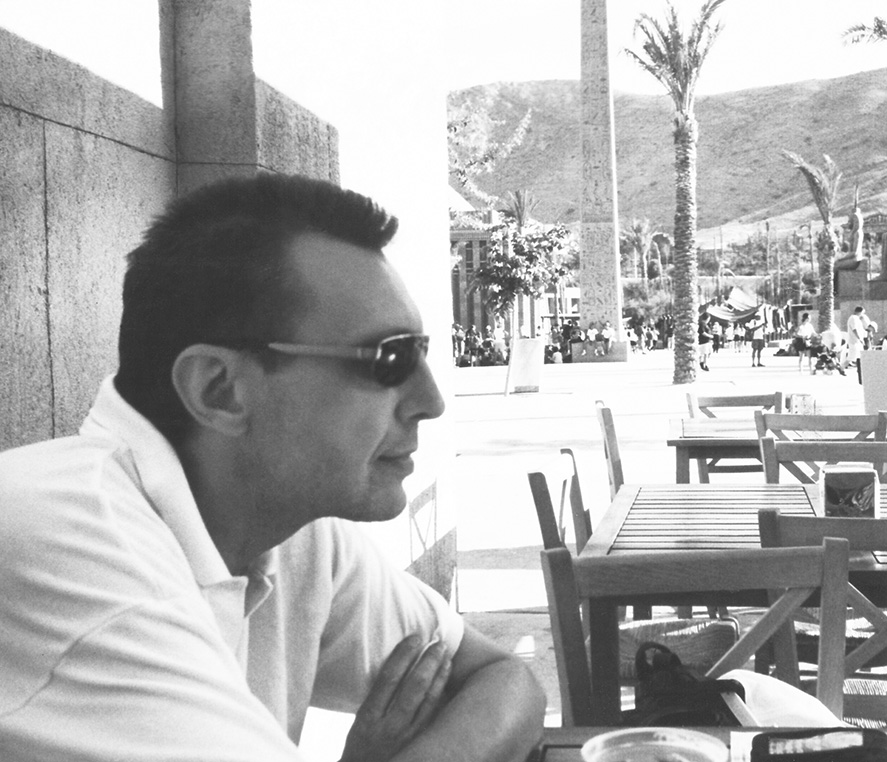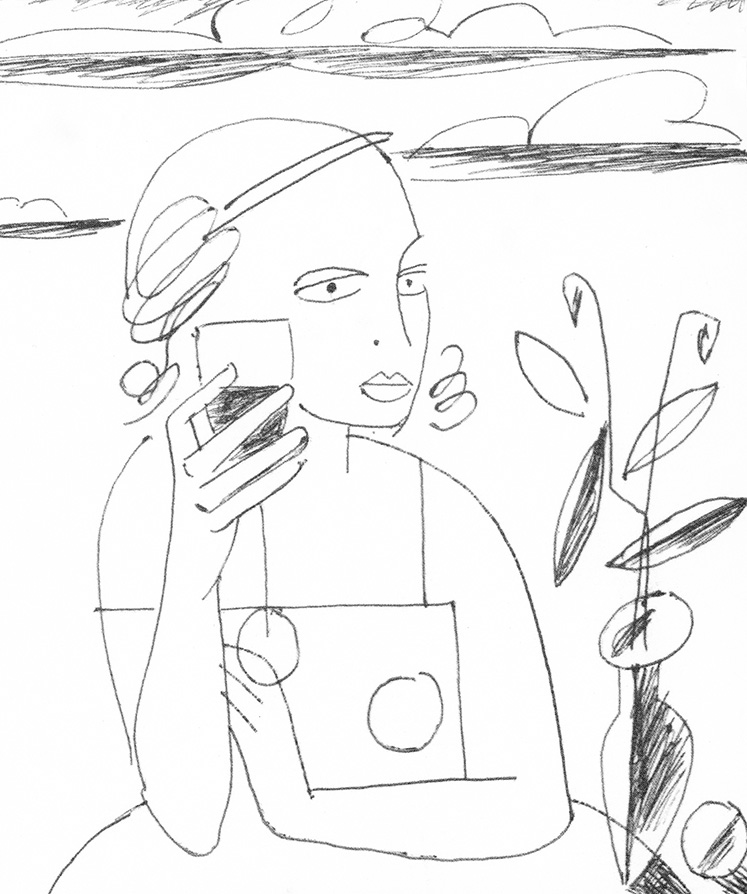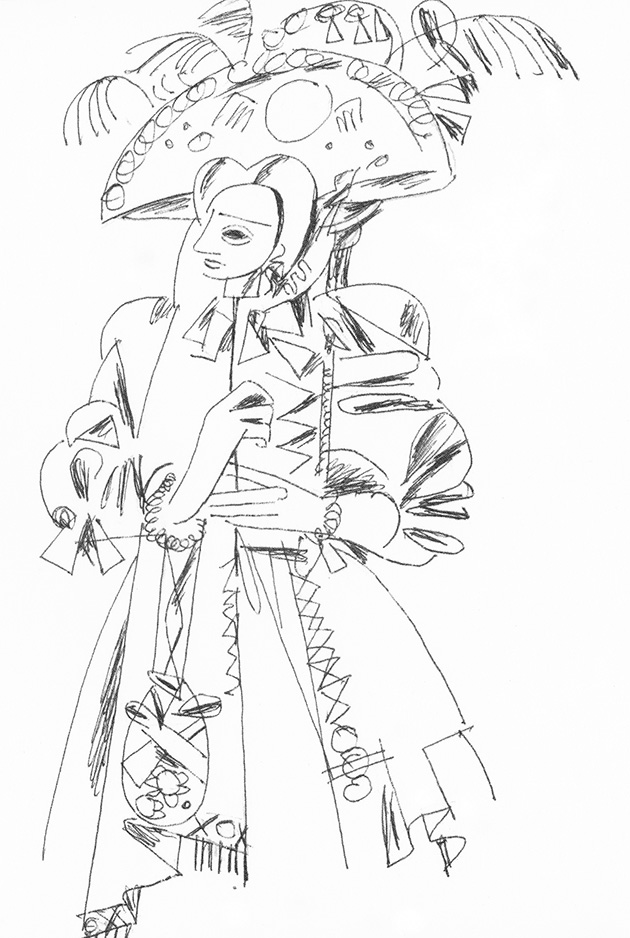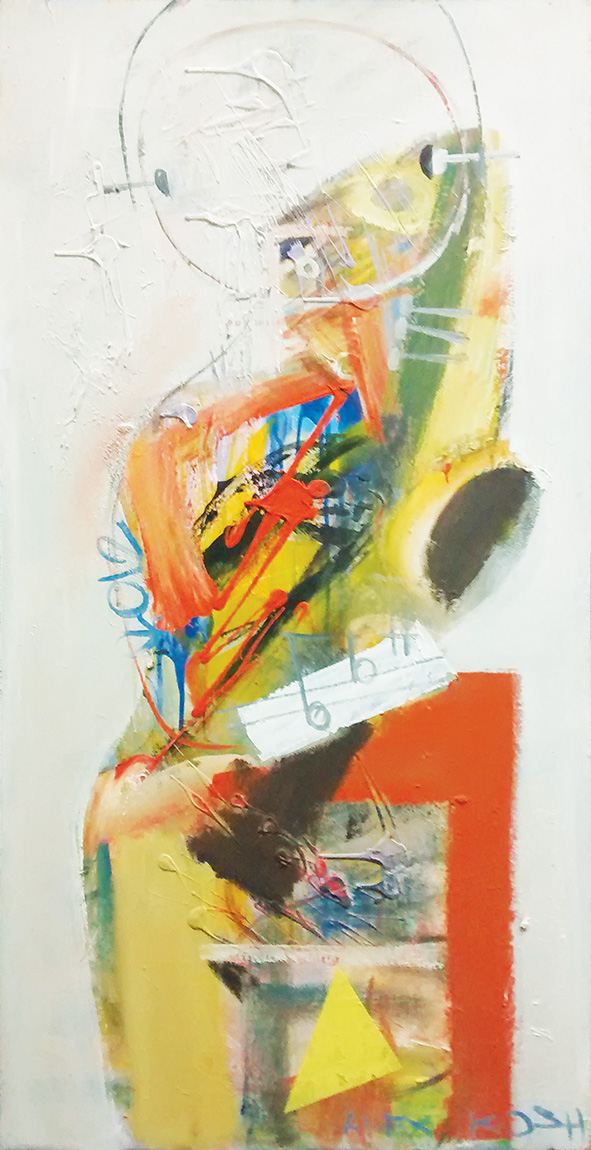Україна - нова епоха. Золотий фонд нації/Олександр Кошечкін
Alex Kosh
Народився 1956 р. у м. Києві. Закінчив РХСШ ім. Т.Г. Шевченка (1975 р.), Київський державний художній інститут (1984 р.), педагог з фаху – Микола Стороженко. Дипломна робота вперше була взята як втілений об’єкт у приміщенні обкому комсомолу в м. Києві (енкаустика). Серед монументальних робіт: мозаїка на фасаді Інституту протипожежної оборони (м. Київ); вітражі у Київському театрі драми і комедії на Лівому березі; вітражі для Музею історичних коштовностей України на території Києво-Печерської лаври; вітраж «Полювання» на заводі «Сокіл» (м. Київ). Номінувався на держпремію ім. Т.Г. Шевченка. Близько 20 персональних та групових виставок провів на території колишнього Радянського Союзу.
Виставки та проекти: «Арт-Міф1», Манеж, м. Москва, 1990 р. (всі роботи були придбані японськими артдилерами); персональна виставка «THE ЕYE», Burgh House New End Square, Hampstead, м. Лондон, 2001 р.; «Sammer exhibition», Королівська академія мистецтв, м. Лондон, 2002, 2003, 2004 рр.; On The Wall – the UK’s latest and largest contemporary art fair, Olympia Grand Hall London, 2004 р.; персональна виставка, Сoningsby Gallery, м. Лондон, 2005 р.; персональна виставка під патронатом принца Чарльза «Exhibition&Charity Auction in aid of The Prince’s Trust», Сoningsby Gallery, м. Лондон, 2005 р.; персональна виставка Highdate Fine Art, м. Лондон, 2006 р.; виставка-аукціон «Тадзіо» «Коллекция живописи и графики ХХ-ХХІ веков», Будинок вчених, м. Київ, 2008 р. (каталог); виставка «Абетка сучасного українського мистецтва ХХІ ст., галерея «Тадзіо», м. Київ, 2009 р. (каталог); пленери українських художників у Франції «Морський ноктюрн», Київ – Чернівці – Лес Есембрас, Association LE PHENIX, 2009 р.; перший благодійний аукціон «Наші діти», галерея «Тадзіо», м. Київ, 2011 р. (каталог); аукціон «Українська альтернатива ХХ», аукційний дім «Дукат», Музей сучасного мистецтва, м. Київ, 2012 р. (каталог); благодійний аукціон на підтримку Державної художньої середньої школи ім. Т.Г. Шевченка, Аукційний дім «Дукат», м. Київ, 2013 р. (каталог); проект «Тербрюген. Сучасні візії», Чернігівський художній музей ім. Г. Галагана, галерея «Тадзіо», м. Київ, 2013, 2014 рр.; благодійний аукціон на підтримку постраждалих бійців АТО, м. Київ, 2014 р. (каталог); благодійний аукціон «Дітям Донбасу», галерея «Тадзіо», м. Київ, 2014 р. (каталог); благодійний аукціон на підтримку фронту «Мистецтво дарує тепло», галерея «Тадзіо» та вільний простір «Smartville», м. Київ, 2014 р.; телепроект «Від пацанки до панянки», картина-приз Алекса Коша в Лондоні переможниці з України; ілюстрації до книги «Элегантность. Ничего лишнего», «Августа Мария», м. Лондон, 2011 р.; Glyn Salton-Cox. The Chandelier of Damocles The lifeand work of Alex Kosh, Naked Punch, № 4 (стаття про творчість Алекса Коша, на обкладинці видання картина митця).
Мешкає та працює в Лондоні.
«And yet Kosh is sanguine. His work of the last few years consistently shows an unforced humanism and wit: the work of experience finally finding its balance. His self-portrait of 1999, ‘The Portrait of the Artist’, shows Kosh with a sardonic, knowing expression, as if calmly appraising the period of his life covered by the eponymous Joyce reference. Kosh uses the metaphor of nutrition, of ‘art as organism’ to describe this happy departure and balance in his work in England. Another excellent example of Kosh’s calmly contemplative yet witty style is ‘The Regular’, an acrylic composition of 2000. This work pay tribute to a hidden memory of Chernobyl – the huge quantities of red wine that the population were told to drink ‘to keep up their strength’, and the resulting widespread public drunkenness. A figure with its head inverted into its body, arms folded, sits by a newspaper and a glass of wine. The head is inverted, perhaps, not from shock from the disaster, but from a crashing hangover. Another aspect of his contemporary work that is immediately apparent is its easy sensuality – the pastel colours and lazy lines of such works as ‘The Woman in the Hammock’ (2001) and ‘Dream’ (2003) glory, Kundera-like, in the escape of an embrace. ‘This is not a Pear’ (2003) playfully evinces the female form in the shape of a pear, half green, half yellow, sitting on a chair, with a corner of pink drapery nestling suggestively in the top left hand corner of the canvas. This composition also exhibits the tendency of Kosh’s work to blend human form and inanimate objects into one, multi-faceted shape.
Perhaps the most poignant of Kosh’s state-sponsored work depicts the hero of Ostovsky’s stridently propagandist novel, Born By Storm. This autobiographical novel tells the story of the author’s personal struggle with debilitating paralysis, leading to recovery and redemption as Party scion. Solzhenitsyn in reverse, if you will. Considering Kosh’s incessant trouble from a unsuccessful operation, this illustrates perfectly the Soviet artist’s double life. State-sponsored redemption and personal regeneration must have proved the bitterest of pills for Kosh to swallow at that time. And the work itself has a telling emotional duality to its composition. Whilst the central figure has his hand outstretched in a gesture of inclusiveness and charity, the figures surrounding him cower, and, behind the central group another figure strains to control his horse with deliberately ill-concealed difficulty. Other similar works include a stained glass window for a hunting shop, depicting, well, a hunting scene – but including a sallow self-portrait; and a school mural depicting the heroes of Pushkin’s tales. An interesting feature of these works is the figures at the margins of the composition, who often seem to be fleeing from the edifying centre, their state-approved rococo drapery trailing behind them. The effect is subtle, yet powerful – rather like that of the marginalia of medieval manuscripts, where ostracised and deracinated figures were depicted in stark contrast to the lofty religiosity of the central text».
Glyn Salton-Cox



